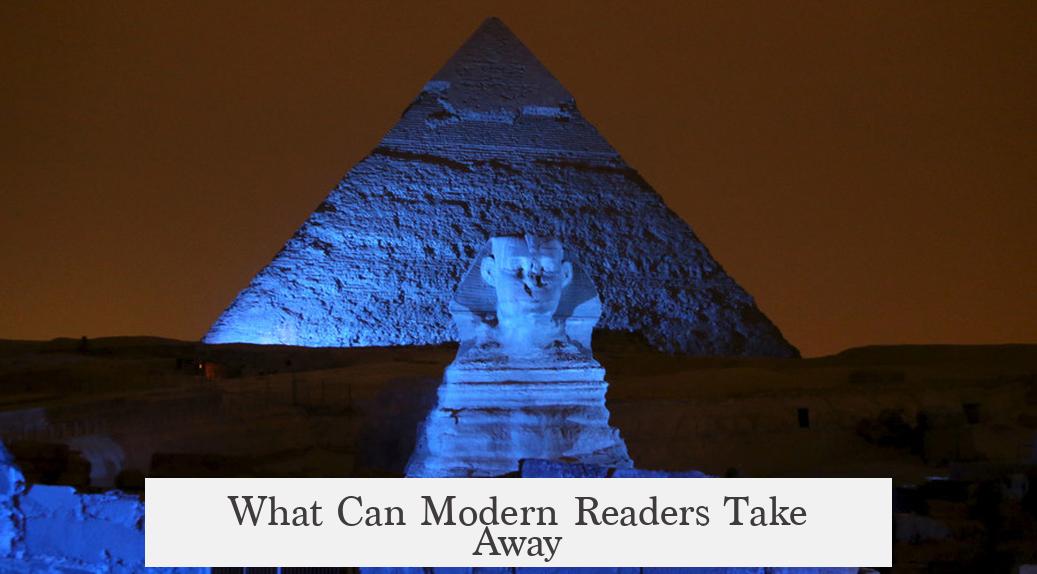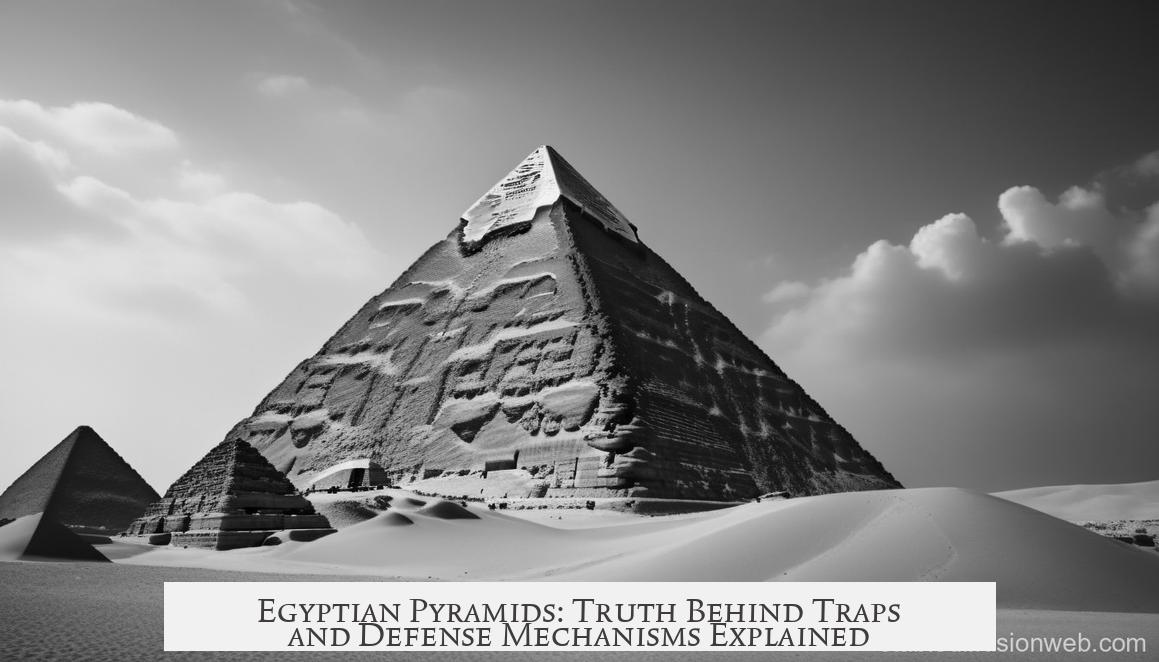Egyptian pyramids were protected against grave robbers but not rigged with elaborate traps as often depicted in movies. Instead, the Egyptians relied on psychological and physical deterrents to safeguard the Pharaoh’s tomb and treasures.
The ancient Egyptians believed the afterlife required the Pharaoh’s mummified body to be preserved intact, along with valuable items like boats and servants to accompany him on his journey. This belief made the tombs prized targets for robbery.
The main threat to pyramids was grave robbers seeking gold, jewels, and artifacts. To counter this, Egyptians developed several clever methods. One key tactic was to create false indicators that the tomb had already been looted. Workers plastered entrances and painted walls inside the tomb chambers to suggest the burial goods were missing, discouraging robbers from searching further.
Physically, large stone blocks were used to seal off corridors leading to the burial chamber once the Pharaoh was entombed. These stone barriers made access difficult but did not involve mechanical or deadly traps. The goal was to hinder entry rather than cause harm.
Contrary to popular adventure stories, the pyramids had no evidence of spring-loaded spikes, rolling boulders, poison darts, or other lethal devices. The protection focused on concealment and structural blocking to maintain the tomb’s security.
- The afterlife beliefs prompted the burial of valuable items with the Pharaoh.
- Grave robbery was a significant concern due to the valuables in the tombs.
- False chambers and painted walls created illusions of emptied tombs.
- Massive stone blocks sealed entrances to prevent easy access.
- No historical or archaeological proof supports complex mechanical traps inside pyramids.
In summary, the pyramids were secured with carefully planned physical barriers and visual deceptions. Egyptian methods prioritized protection without resorting to booby traps like those often dramatized in films.
Were Egyptian Pyramids Really Rigged with Traps?

Let’s cut to the chase: Yes, Egyptian pyramids were protected, but not the way Hollywood shows us Indiana Jones dodging massive rolling boulders or spear-shooting statues. The fascinating truth dives into a clever mix of psychology and sturdy physical barriers crafted by ancient Egyptian workers. So, were pyramids really rigged with traps? Absolutely, but these traps were far from the movie-style mechanical horrors you might imagine.
Imagine the stakes in ancient Egypt. The Pharaohs were no ordinary rulers. They believed firmly that their journey to the afterlife depended on their bodies being perfectly preserved and accompanied by their treasured belongings — sometimes even servants and boats— to keep them comfortable in eternity. The Old Kingdom Egyptians didn’t mess around when it came to their burial practices.
Now, such lavish funerary treasures—gilded finery, exquisite amulets, and precious artifacts—were prized targets. Grave robbery was rampant. And with that grim reality, the ancient Egyptians had to come up with effective ways to protect the sanctity of their Pharaohs’ final resting places. But instead of spring-loaded axes or poison darts (sadly for Indiana Jones fans), they relied on brainpower and brute force.
The Psychological Shield: Making Robbers Think the Tomb was Empty
Here’s where it gets brilliant. Workers deliberately made the tombs appear already looted. They plastered over entrances and painted walls inside so that grave robbers would believe the tomb’s riches had already been cleared out. This act of deception played on the robbers’ greed and impatience, convincing them there was nothing left worth stealing.
Imagine being a thief in ancient Egypt. You come across a tomb sealed up with thick plaster and the interior looks barren or damaged. Why risk your neck and your life pushing deeper? This psychological trick saved many a Pharaoh’s belongings.
Stone Cold Defenses: Physical Barriers Within the Pyramid
Beyond fooling the human mind, the Egyptians implemented some pretty effective physical barricades. As workers finished construction and left the tomb, they lowered massive stone blocks into place. These slabs sealed off the deeper chambers inside the pyramid, creating an obstacle that even the most determined robbers found hard to breach.
These blocks weren’t just any stones; they were precisely cut and too heavy to move easily. If you think about it, this approach was a straightforward and practical solution. Instead of inventing tricky traps that could malfunction or kill the tomb’s own keepers, they simply blocked access with unbeatable stone walls.
The Reality Behind the Trap Myths
This raises the question: why do we think Egyptian pyramids are riddled with traps? Hollywood largely deserves the credit for that thrilling, if inaccurate, imagery. Films love the drama of sudden spikes, rolling boulders, or dart-shooting walls. These ideas certainly make for better stories but don’t hold up against the archaeological record or historical texts.
Researchers and archaeologists studying these legendary tombs have found no evidence of complex mechanical traps hidden within. The “traps” were more about misdirection and solid construction. Ancient Egyptian engineers and architects knew well how to protect their monuments, but they did it through deception and engineering rather than danger.
What Can Modern Readers Take Away?

This is a fascinating example of how ancient civilizations used smart, low-tech solutions to real problems. Instead of relying on sophisticated gadgets, they trusted human psychology and brute force.
Protecting a pyramid was less about endangering intruders and more about making theft not worth the risk. A simple painted wall and a massive stone block kept treasures safe longer than any hidden spike pit might have.
So next time you watch an Indiana Jones movie and hold your breath as he dodges death traps, remember the ancient Egyptians were way more practical — and maybe a little sneakier — in their tomb protection tactics.
Summary Table: Myth vs. Reality of Pyramid Traps
| Aspect | Hollywood Portrayal | Historical Reality |
|---|---|---|
| Type of Traps | Mechanical, deadly traps such as spikes, darts, and rolling boulders | Psychological deterrents and massive stone barriers |
| Effectiveness | Dramatic but unproven | Successful in deceiving and physically blocking robbers |
| Purpose | To kill or severely injure intruders | To discourage entry and protect priceless burial goods |
Final Thoughts
Egyptians placed incredible value on the afterlife and protecting their Pharaohs accordingly. Their “traps” were less about gore and violence, more about clever psychological tricks and brute engineering. Maybe less thrilling for a blockbuster, but far more grounded in reality.
So, Would you trust a plastered wall and a stone block over a pit of arrows flying from the walls? The ancient Egyptians did—and it worked. No Indiana Jones-style chase scenes required.



